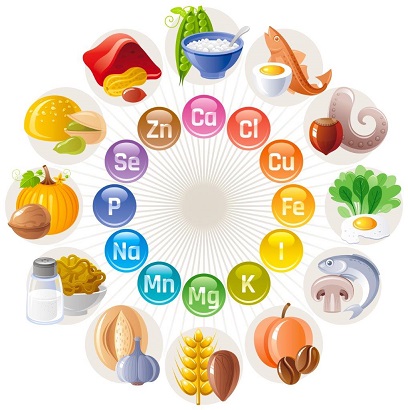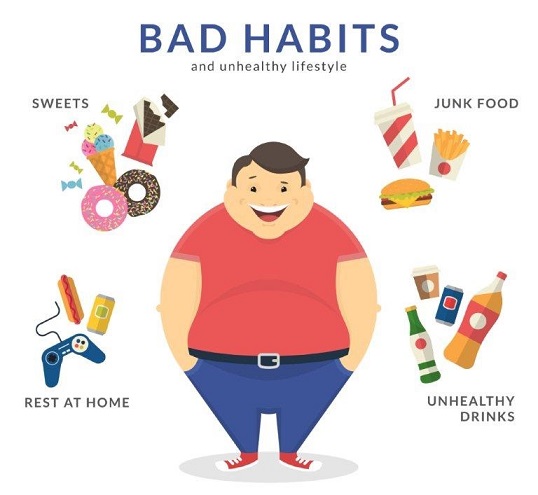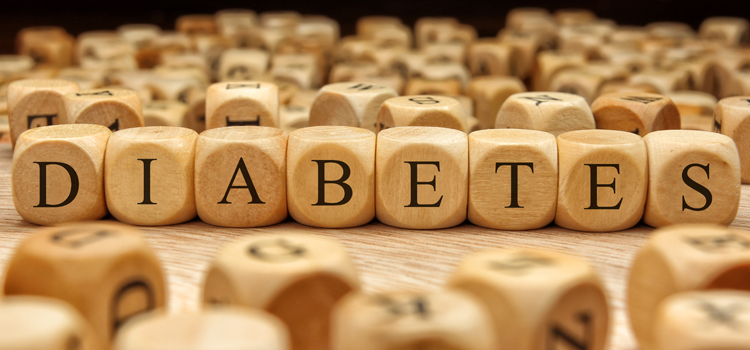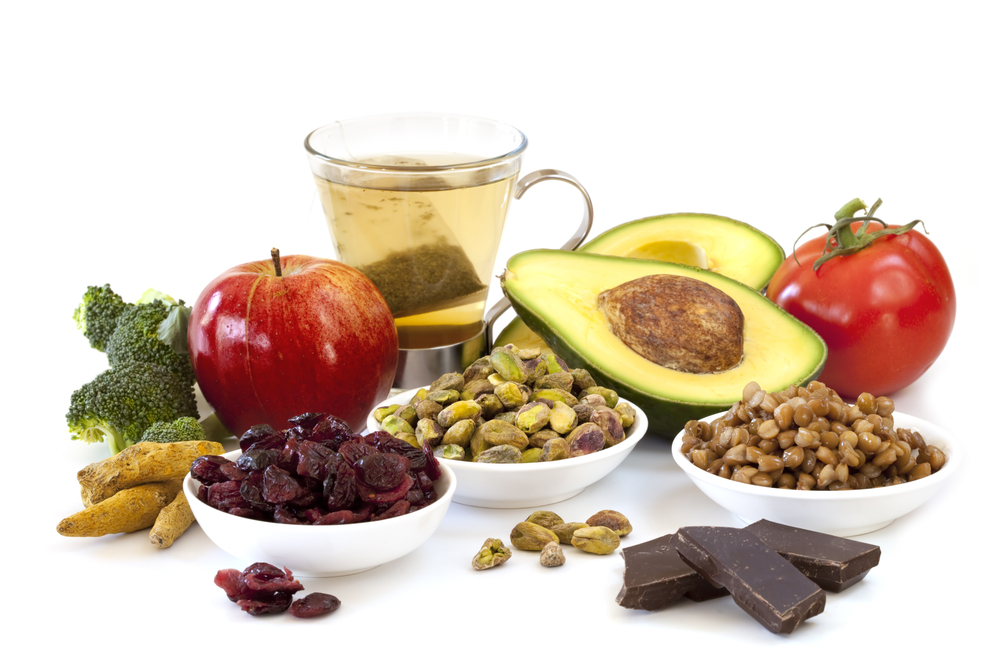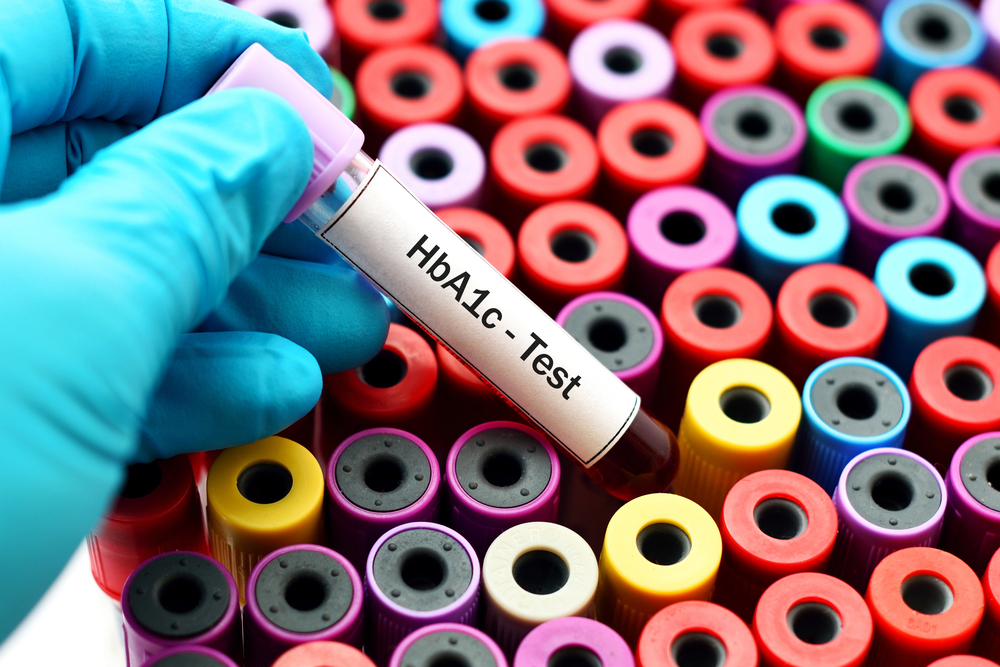What is Type 2 Diabetes?
Overview
Diabetes mellitus, commonly known as diabetes is a chronic disease that occurs when blood glucose, also called blood sugar, is higher than usual. Blood glucose is the main source of energy for the body and comes from the food we eat.
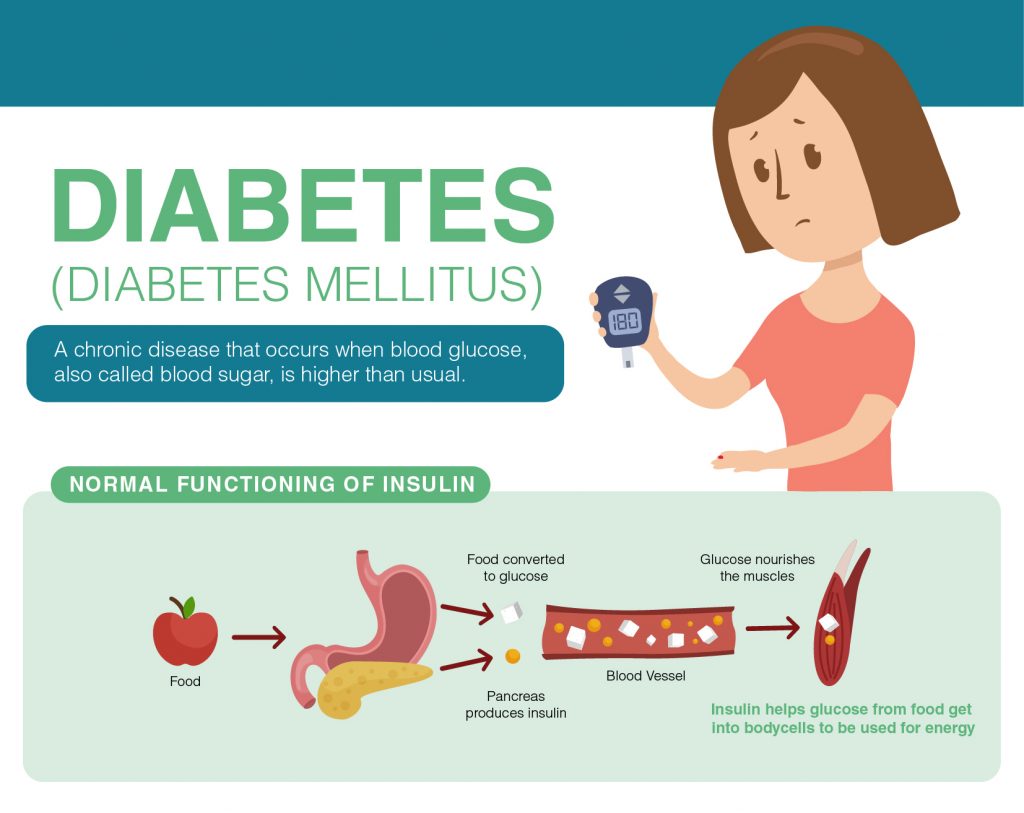 The pancreas, an organ that lies near the stomach, makes a hormone called insulin which helps glucose from food get into body cells to be used for energy.
The pancreas, an organ that lies near the stomach, makes a hormone called insulin which helps glucose from food get into body cells to be used for energy.
With diabetes, the body either doesn’t make enough insulin or can’t effectively use the insulin it makes. Not being able to produce insulin or use it effectively leads to raised glucose levels in the blood (known as hyperglycemia).
Over the long-term high glucose levels are associated with damage to the body and failure of various organs and tissues.
Types of Diabetes
Type 1
It occurs when the body fails to produce insulin. Approximately 10% of all diabetes cases are Type 1. Patients with Type 1 diabetes will need to take insulin injections for the rest of their life.
Type 2
In this type of diabetes, the cells in the body do not react to insulin (this is also known as insulin resistance) or the insulin produced by the pancreas does not match the requirement of the body (insulin production is less). Type 2 diabetes can occur at any age but is most prominent with humans who are 40+ in age and accounts for around 90% of all diabetes cases.
It can be controlled with
- Healthy lifestyle (exercise and healthy food)
- Medication
- In some cases, external insulin may be required
Gestational Diabetes
A type of diabetes that consists of high blood glucose during pregnancy and is associated with complications to both mother and child. Gestational Diabetes usually disappears after pregnancy but women affected and their children are at increased risk of developing type 2 diabetes later in life. It can be controlled with exercise and medications.
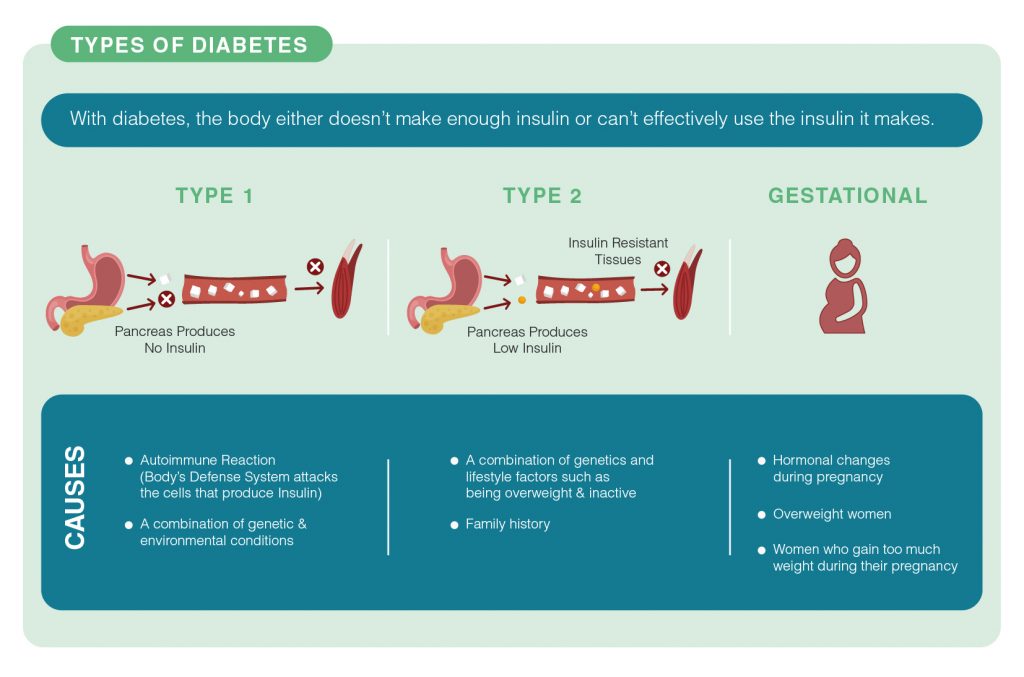
Prediabetes
It is a condition where blood glucose levels are higher than normal, but not high enough to merit a diabetes diagnosis. A healthy lifestyle along with regular check-ups of blood glucose helps to keep a check on prediabetes and prevents it from converting into diabetes.
What is the cause of Type 2 Diabetes
Type 2 diabetes stems from a combination of genetics and lifestyle factors such as being overweight and inactive. People with family history also have more chances to develop Type 2 diabetes as compared to people who do not have any family history of Type 2 diabetes.
What are the symptoms of Type 2 Diabetes?
The general symptoms include:
- Frequent urination
- Excessive thirst
- Weight loss
- Increased Hunger
- Extreme fatigue
- Blurry vision
- Slow healing wounds
- Tingling or numbness in the feet or toes
Men with diabetes may have
- Decreased sex drive
- Erectile dysfunction (ED)
- Poor muscle strength.
Women with diabetes may have
- Urinary Tract Infection (UTI)
- Yeast Infections
- Dry, Itchy skin
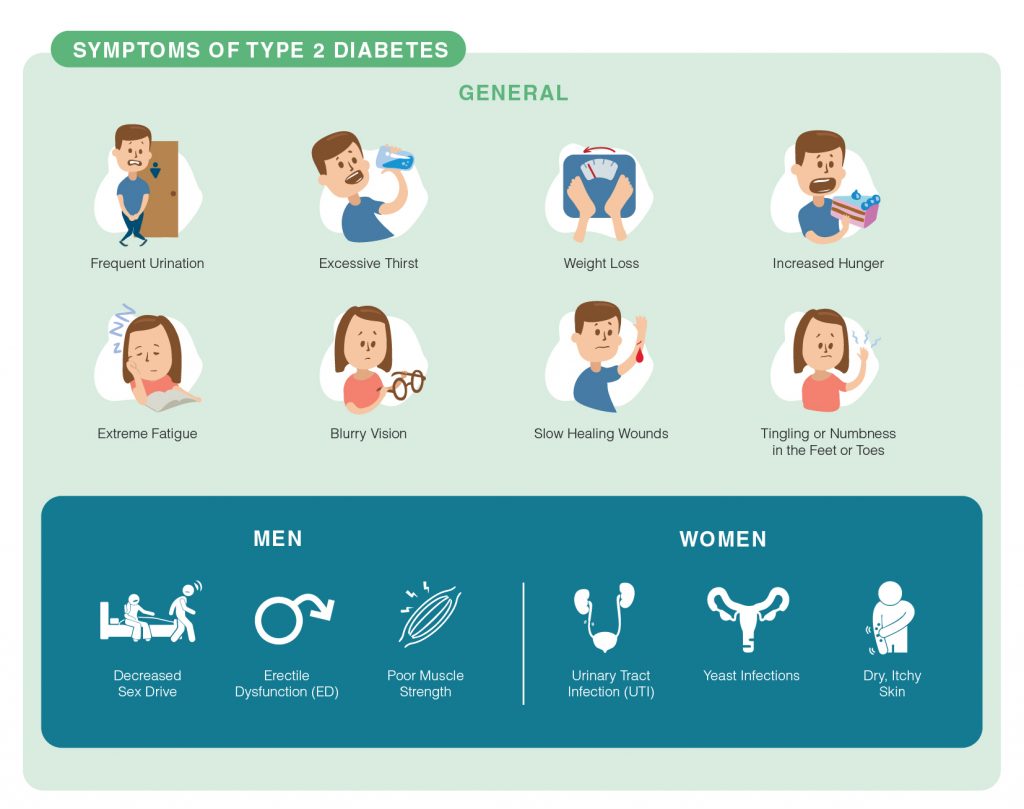
Tips to prevent Type 2 Diabetes
Here are some tips to help reduce the risk of type 2 diabetes.
- Lose extra weight. Excess weight is the single most important cause of type 2 diabetes.
- Eat a balanced, healthy diet
- Get more physical activity. Exercise can help to lose weight, lower blood sugar and boost sensitivity to insulin
- Limit alcohol intake
- Quit smoking
How does exercise help in Diabetes?
Exercise increases insulin sensitivity and stimulates another mechanism that allows the muscles to absorb and use sugar for energy, even without insulin.
Steps a person can take to embrace a lifestyle with diabetes include:
- At least two and a half hours of moderate to vigorous intensity physical activity per week like brisk walking, water aerobics, swimming, or jogging.
- Two to three sessions of resistance exercise per week such as lifting weights or doing pushups. It strengthens the muscles.
- Incorporate flexibility in exercises like stretching or yoga into your weekly routine. Yoga brings peace and calmness and lowers blood sugar.
Diabetes and Diet
Healthy eating is a central part of managing diabetes. In some cases, changing the diet may be enough to control the disease. Following tips may be helpful:
- Eat more frequently and in small portions.
- Eat vegetables and fruits and have them in place of high-calorie food.
- Whole grains high in fiber are recommended as a healthy source of carbohydrates.
- Eat pulses, a low-fat starchy source of protein and fiber, such as beans, lentils, chickpeas and garden peas.
- Reduce intake of saturated and trans fats by having poultry and fish under the grill, rather than fried.
- Select skim (fat-free) milk and low-fat (1%) dairy products and reduce the consumption of cheese and butter.
- Reduce sugar intake and pay attention to food labels.
- Reduce salt intake by avoiding foods with high sodium such as processed foods.
How is Diabetes diagnosed?
Doctors use the diabetes blood tests to diagnose prediabetes and diabetes. Women are also routinely tested for gestational diabetes during their second or third trimesters of pregnancy.
Hemoglobin A1c (HbA1c)
This test evaluates the average amount of glucose in the blood over the last 2 to 3 months. It’s also called HbA1c, glycated hemoglobin test, and glycohemoglobin.
HbA1c readings can be interpreted as below:
| A1c Level | Indication |
| Less than 5.7% | Normal |
| 5.7% to 6.4% | Prediabetes |
| 6.5% | Diabetes |
Fasting Plasma Glucose (FPG)
This test measures the level of glucose in the blood after an 8-12 hour fast.
The result can be interpreted as below:
| Fasting Glucose Level | Indication |
| From 70 to 99 mg/dL | Normal fasting glucose |
| From 100 to 125 mg/dL | Prediabetes (impaired fasting glucose) |
| 126 mg/dL (7.0 mmol/L) and above on more than one testing occasion | Diabetes |
OGTT (Oral Glucose Tolerance Test)
This test is used to detect gestational diabetes.
After a fasting glucose level is measured, a woman is given a 75-gram dose of glucose to drink and her glucose levels are measured at 1 hour and 2 hours after the dose.
Only one of the values needs to be above a cutoff value for diagnosis:
| Time of Sample Collection | Glucose Result |
| Fasting | Equal to or greater than 92 mg/dL |
| 1 hour after glucose drink | Equal to or greater than 180 mg/dL |
| 2 hours after glucose drink | Equal to or greater than 153 mg/dL |





